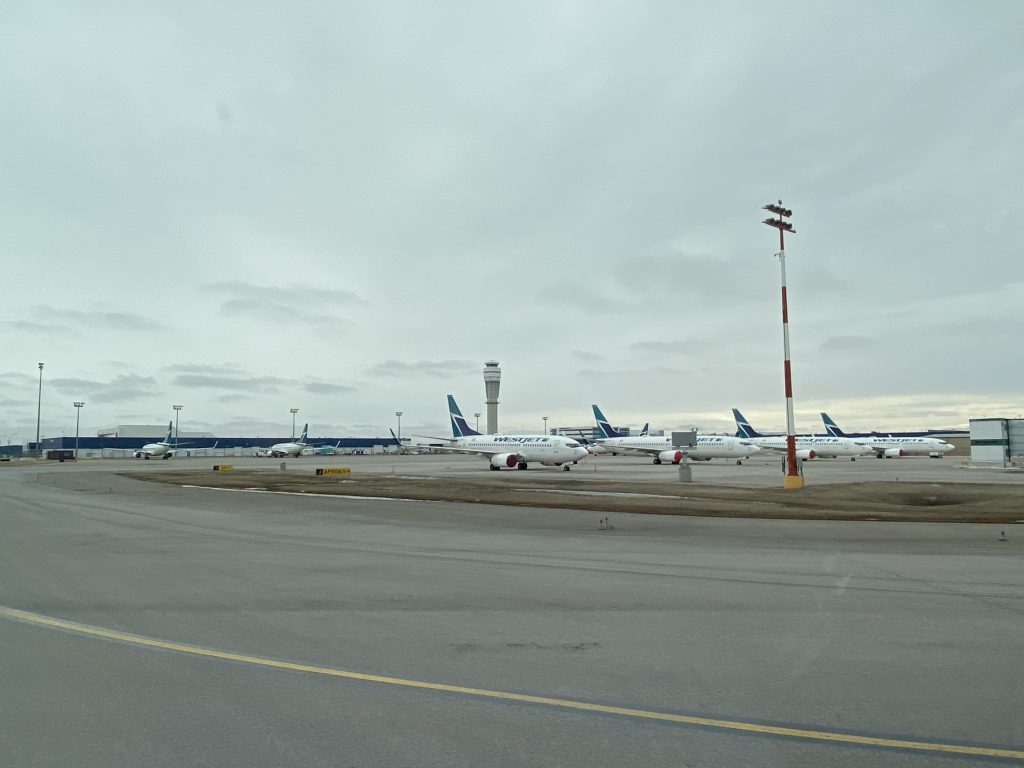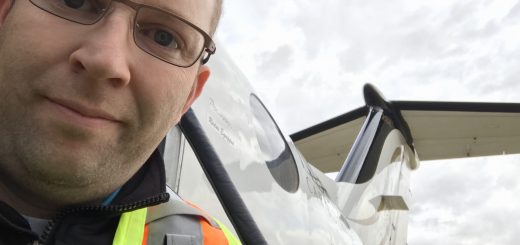And The Board Turned Red
About a month ago the world for many Canadians flipped overnight with the arrival of COVID-19 virus finding its way into almost every aspect of our lives. For those of us in the aviation industry, this has been completely devastating for our careers.
I can clearly recall receiving my March flight schedule and being extremely frustrated with the level of flying I was assigned and learning that thankfully, WestJet’s ALPA Team was in negotiations for pilot retention and recruitment. Oh, how things can change in a hurry. Around the middle of March, the government of Canada their intention to close the borders to non-essential travel and that Canadians abroad were encouraged to return to Canada. Instantly, I knew this was the end of the modern aviation industry as we knew it. Pilot shortages will now be a thing of the past as the travel plans of millions are now both significantly curtailed with no end in sight.
As the chatter continued in the flight deck and in the airport lounges, official information from the company and our union representatives came in drips and drabs. Then, one Friday afternoon, every WestJetter received an email advising all staff that they needed to complete a binding survey for their future employment. Three choices were presented: early retirement, early out, and leave of absence. Still being a relatively new hire, the only option available to me was a leave of absence, but with limited information about what that meant for benefits, salary, and potential for recall, I was left stupefied. On a flight the next day, I engaged in a good conversation with a training captain and started to come around to the idea that a leave of absence would be the best option for me as I’d be able to maintain health benefits, be eligible for employment insurance, be recalled based on seniority, and be able to shift my focus to our new web design company for additional income.
Hearing clearly from the pilot group that many were also confused and frustrated, the ALPA team convened a conference call. As the situation was literally changing by the hour, before the call even started, an email from ALPA arrived in our inboxes indicating that a deal had been struck for job stability for all pilots in April, at a reduced salary of about 50%. Just when I had come to the decision on the leave of absence, this new option presents more confusion, so now what?
Hungry for more information, I joined the call and received vital details. April’s schedule would be reduced to 54 hrs, would be mostly one-day pairing, with starts and finishes based out of YYC, and flights between bases would be dramatically reduced. Reading between the lines, this is a death sentence for a commuter pilot. Now, reassured with my original plan that the leave of absence was my only option, I completed the survey and immediately started preparing for a long period of time off from flying.
A few days later, now back at home, with a Bailey’s latte in hand, I sat down to make a lay-off todo list. Top of the list was setup a home office to kickstart the web company, Flight Plan Marketing. Thankfully, I’ve got both the experience and ambition to make this happen but it will be a slug to regrow a client base. Second on the list was starting an application for employment insurance, which was the first task I tackled with the new office ready to go. Further down the list were a mishmash of other objectives from coordinating oil changes for the vehicles to deferring mortgage payments, to studying for my last ATPL exam.
Jumping ahead a week, I learned that I didn’t get the leave of absence (based on my seniority) and that I’d be flying in April. Extremely disappointed and filled with dread, I waited for the arrival of the flight schedule. A mere couple days before April 1, my calendar filled with flights and instantly I knew I was doomed. Thinking that I’d be on leave, I neglected to update my bid and as a result, I ended up with a whack of long one-day pairings separated by two days off. Quickly checking flights between Edmonton and Calgary, I realized it was going to be next to impossible to commute. Clearly my only option was to start dumping flights to other pilots, which would impact my take-home salary but would be cheaper than having to fork out for hotels in YYC. Reaching out to a few buds I had previously traded with, I was able to relieve myself of two particularly problematic pairings and found a glimmer of hope that I could make the rest of the month work.
Now, nearly halfway through April, almost a dozen other flights have dropped off my schedule as the company canceled flights and I’m making the best of the challenging situation. Probably a theme I’ll have to get very familiar in the coming months.
With airports eerily empty, and flight loads around 5%, and everyone on high alert for coughs and sneezes, I plod along. As information trickles out of the government for aid for business large and small, word hits the pilot team that all employees will be brought back on payroll but with the May schedule needing only 500 pilots, there is no indication yet what the other 1700 pilots will be doing. Will it be a paid furlough, will it be random office assignments, none knows. Most gratefully the company leadership and ALPA teams have done their very best to communicate with us.
Just yesterday, all pilots were invited to a pilot only video conference call and further information was provided as to what the airline will look like in May: 181 aircraft in service down to 30, 700 daily flights down to 80, and 2200 pilots down to 500. The last of those hitting the hardest. But when will lay-offs actually come, what form will they look like and most importantly how long will they last are still all unknowns.
In the days ahead, we expect details from ALPA and recommendations based on our unique situations. As they say, watch this space.






Recent Comments